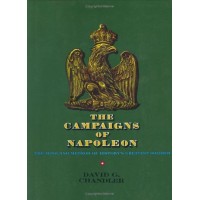
Title: The Campaigns of Napoleon
Author: David Chandler
Published: 1966
The Campaigns of Napoleon is an exhaustive analysis and critique of Napoleon's art of war as he himself developed and perfected it in the major military campaigns of his career.
GMM - I am lucky to have an original 1966 single volume printing of this masterpiece in exceptional condition.

Title: Napoleon: The Last Campaigns 1813-1815
Author: James Lawford
Published: 1979
The book is divided into three parts. Part one depicts the struggle for Germany in 1813 and describes the battles of Bautzen, Dresden, Leipzig, and others. This section also features profiles of the opposing armies and their leaders. Part two describes the Allied invasion of France and the subsequent French campaign. Part three focuses on the Hundred Days, the battle of Waterloo, and the exile and death of Napoleon. Quotations from the battle participants are interspersed throughout the narrative, and there are many illustrations and maps which supplement the text. Finally, the appendix provides an analysis of the battle of Waterloo.

Title: Imperial Glory: The Bulletins of Napoleon's Grande Armée, 1805-1814
Author: J. David Markham
Published: 2003
Napoleon's bulletins are of immense historical significance, reporting as they do on all the key battles of Napoleon's campaigns. They contain not only important military information, but fascinating political, social and personal commentaries that are critical to understanding Napoleon the man as well as Napoleon the soldier. Presented complete for the first time in English, and supported by Markham's historical and biographical notes, the bulletins cover the key period between the Battle of Austerlitz in 1805 and the collapse of Napoleon's Empire in 1814. The bulletins describe military operations, pick out distinguished officers and units, and present Napoleon's own interpretation of battles lost and won. Also included are various key reports from marshals and others, including the bulletins of the Army of Italy commanded by Massena in 1805. Most of this additional material has never been published in English until now. Imperial Glory is an invaluable contribution to literature on the Napoleonic Wars and a key book for anyone who would like to learn more about one of history's most remarkable and colorful leaders.

Title: The Military Maxims of Napoleon
Author: David Chandler
Published: 1995
Here, in one volume, is the essence of Napoleon's knowledge and wisdom, the fruit of his practical experience and his study of the great empire-builders from Alexander to Frederick the Great. David G. Chandler has updated the best among previous editions of Napoleon's maxims: the work produced in 1901 by William E. Cairnes, who selected the most insightful and authentic of the maxims and annotated each of them. In the process Cairnes considered the great captains who had influenced Napoleon's thinking as well as the impact of his teachings on the conduct of war since his death. In addition to his penetrating introduction, Chandler has contributed further commentaries that examine Napoleon's work from the 20th-century perspective of the two world wars, Vietnam, the Falklands, and other conflicts, and analyzes the ways in which commanders have observed or failed to observe Napoleon's teachings. Now every military student and enthusiast can benefit from the brilliance of Napoleonic insight and wisdom.

Title: The Napoleonic wars: An illustrated history, 1792-1815
Author: Michael Glover
Published: 1979
In this book Michael Glover, author of eleven other military historical books, and an authority on the period, weaves together the four strande--military, naval, economic and diplomatic--which went to make p the greatest war that history has known, and which included such classic battles as the Nile, Marengo, Trafalgar, Austerlitz, Jena, Friedland, Wagram, Salamanca, Borodino, Leipzig and Waterloo.

Title: Wellington in the Peninsula, 1808-1814
Author: Jac Weller
Published: 1992
The best single-volume account of the Peninsular War. This classic account of Wellingtons tactics and strategy in the Peninsular War is one of the best single-volume works ever written on the epic campaign.
Jac Weller covers all the battles with the French in which Wellington was involved. Talavera, Busaco, Salamanca and Vittoria are among the famous battles that he brings to life once more, with the aid of meticulous research, extensive visits to and photographs of the battlefields themselves, and an unwavering ability to cut a clear path through tangled military events.
Jac Weller was a distinguished military historian, and an expert on weaponry. Wellington in the Peninsula is part of his famous trilogy on the Duke, together with Wellington in India and Wellington at Waterloo. A collection of his essays, On Wellington, edited by Andrew Uffindell, was recently published by Greenhill.

Title: Napoleon 1814: The Defence of France
Author: Andrew Uffindell
Published:
In 1814, after two successive years of defeat in Russia and central Europe, Napoleon was faced with the ultimate disaster - an Allied invasion of France itself. The conduct of the intense, fast-moving campaign that followed has been widely hailed as one of his greatest feats as a commander, yet it has rarely been described fully and objectively. Andrew Uffindell, in this gripping and original study, reconstructs the campaign, reassesses Napoleon's military leadership and provides a masterly account of a campaign that helped shape modern Europe.
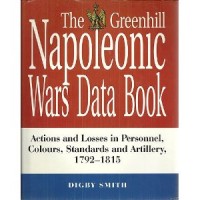
Title: The Greenhill Napoleonic Wars Data Book
Author: Digby Smith
Published: 1998
A comprehensive data collection of the details associated with each of the battles. A truly exhaustive book of data.
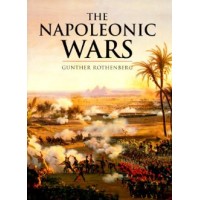
Title: The Napoleonic Wars
Author: Gunther Rothenberg
Published: 2000
Military historian Gunther Rothenberg provides a detailed account of the Napoleonic Wars in this installment of Cassell's multivolume series covering the history of warfare. The treatment is predominantly military rather than social. The matter-of-fact, dispassionate text is rich in tactical details and statistics, augmented by contemporary paintings, well-designed maps, and diagrams. The actions of the protagonists' commanders are also critically assessed, with much attention given to Napoleon himself, stressing the power of his charisma but showing that his insistence on sole control ultimately proved a weakness. Significantly, The Napoleonic Wars aims to show that, far from being the end of a military era, this was a period marking the origins of modern warfare. Developments in army organization, strategy, and weaponry gained from the experience of over 20 years of war are progressively described. The main points of Rothenberg's argument, that Napoleonic strategies continued to be followed and that the sheer scale of war was revolutionary, are summed up in the brief epilogue. The bulk of the broadly chronological text is uncluttered by too much speculation; military-history buffs will appreciate The Napoleonic Wars for its clarity.

Title: 1809 THUNDER ON THE DANUBE: Napoleon's Defeat of the Habsburgs Volume I: Abensberg
Author: John H. Gill
Published: 2008
The Franco-Austrian War of 1809 was Napoleon's last victorious war. Napoleon faced the Archduke Charles, the best of the Habsburg commanders, and a reformed Austrian Army that was arguably the best ever fielded by the Danubian Monarchy. The French ultimately triumphed but the margin of superiority was decreasing and all of Napoleon's skill and determination was required to achieve a victorious outcome.Gill tackles the political background to the war, especially the motivations that prompted Austria to launch an offensive against France while Napoleon and many of his veterans were distracted in Spain. Though surprised by the timing of the Austrian attack on April 10th, the French Emperor completely reversed a dire strategic situation with stunning blows that he called his 'most brilliant and most skillful maneuvers'. Following a breathless pursuit down the Danube valley, Napoleon occupied the palaces of the Habsburgs for the second time in four years. The Austrians recovered, however, and Napoleon suffered his first unequivocal repulse at the Battle of Aspern-Essling on the shores of the Danube opposite Vienna.He would win many battles in his future campaigns, but never again would one of Europe's great powers lie broken at his feet. In this respect 1809 represents a high point of the First Empire as well as a watershed, for Napoleon's armies were declining in quality and he was beginning to display the corrosive flaws that contributed to his downfall five years later.

Title: 1809 THUNDER ON THE DANUBE: Napoleon's Defeat of the Habsburgs, Vol. II: The Fall of Vienna and the Battle of Aspern
Author: John H. Gill
Published: 2008
In the second volume of this epic work, John H. Gill traces Napoleon's progress as he sought to complete his victory over the Habsburgs. The war had erupted on April 10th with Austria's invasion of Germany and Italy. After just two weeks, Napoleon had battered the Habsburg Archduke Charles in a series of bruising defeats.
This volume begins with a Napoleon astride the Danube at Regensburg. He faced a critical strategic choice - whether to pursue the injured Austrian main army into Bohemia or march directly for Vienna, the seat of Habsburg power.
After electing to target Vienna, his troops defeated the Austrians in the brutal Battle of Ebelsberg, allowing him to enter the city on May 13th. But meanwhile, on the far side of the Danube, he suffered a dramatic loss at the grueling, two-day Battle of Aspern. While his Danube forces recovered from this setback, the Emperor cleared trouble from his strategic flanks.
Gill describes in vivid detail the hopeful Habsburg invasion of Italy, led by the 27-year-old Archduke Johann, and the fierce French counter-offensive under Napoleon's stepson, Eugene de Beauharnais (also 27). In a series of encounters across Italy, Eugene rebounded from initial defeat to advance triumphantly into Austrian territory, shattering and scattering Johann's army. In the wake of Aspern, while the Austrians vacillated, Napoleon gathered every man, horse and gun around Vienna, setting the stage for the gigantic spectacle of the Battle of Wagram, the final chapter in the story of the 1809 war.

Title: 1809 THUNDER ON THE DANUBE: Napoleon's Defeat of the Habsburgs, Vol. III: The Final Clashes of Wagram and Znaim
Author: John H. Gill
Published: 2010
In this third volume John H. Gill brings to a close his magisterial study of the 1809 war between Napoleonic France and Habsburg Austria. This final volume begins with the principal armies of both antagonists recuperating on the Danube's banks. As they prepared for the next encounter, important actions were taking place in distant theaters of war: Eugene brought his army into Hungary and won a crucial victory over Johann on the anniversary of Marengo, Prince Poniatowski's Poles outflanked another Austrian archduke along the Vistula, and future marshal Marmont drove an Austrian force out of Dalmatia to join Napoleon at Vienna.These subsidiary campaigns all set the stage for the clash that would decide the war: the titanic Battle of Wagram. Second only in scale to the three-day slaughter at Leipzig in 1813, Wagram saw more than 320,000 men and 900 guns locked in two days of fury that ended with Austrian retreat. The defeat, however, was not entirely complete and Napoleon had to force yet another major engagement on the Austrians before Charles would accept a ceasefire. This under-appreciated battle at Znaim introduced an extended armistice that finally ended with a peace treaty signed in Vienna in October.Gill makes use of an impressive array of sources to present a lively account that covers the conflict from the diplomacy of emperors to the common soldiers suffering the privations of campaigning and the horrors of battle as they attempt to carry out their duties. Enriched with uncommon illustrations, more than 40 specially prepared maps, and extraordinary order of battle detail, this work concludes an unprecedented English language study of Napoleon's last victorious war
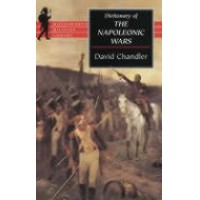
Title: Dictionary of the Napoleonic Wars
Author: David Chandler
Published: 1979
A reference work on the Napoleonic Wars which covers all the important soldiers, sailors, strategies, armaments and battles that shaped Napoleon's career. Includes information on the campaigns led by Napoleon as well as related events such as the Peninsular War.
I have the original 1979 printing.

Title: FROM EYLAU TO FRIEDLAND: 1807 The Polish Campaign
Author: F.-G. Hourtoulle
Published: 2007
For More than 40 years, F.-G. Hourtoulle has explored the Napoleonic epic and for the past eight years, he has been producing fabulous books for enthusiasts, packed with color graphics and contemporary paintings.Continuing on from Jena Auestaedt , Borodino, Wagram, and 1814 comes this latest volume on Friedland. From Berlin to Tilsit, Napoleon led the French army in one of his most glorious campaigns. During these eight months, the basic rank-and-file as well as the most legendary general out all their efforts in to the task of reviving Friedland, the best army in Europe was the tool of one of the greatest military leaders of all time.

Title: JENA AUERSTAEDT: The Triumph of the Eagle
Author: F.-G. Hourtoulle
Published: 2005
The First Empire was at its height during the Jena-Auerstadt campaign of 1806. The campaign was a classic of Napoleonic tactics, as Marshal Davout held one German army at bay while Napoleon concentrated his forces to defeat the main one. This excellent book combines an informative narrative with paintings of the battles and a superb collection of images of uniforms and equipment from the period-all in color.
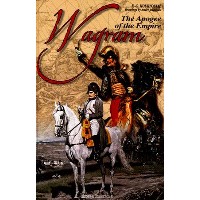
Title: Wagram - The Apogee of the Empire
Author: F.G. Hourtoulle
Published: 2003
In the same style as the previous two books by Hourtoulle, here is a fabulous full color book on this major battle in the Napoleonic Wars. A detailed text is accompanied by contemporary paintings and a vast array of graphics illustrating the uniforms and equipment of the soldiers of the time.

Title: Austerlitz - The Empire at its Zenith
Author: F.G. Hourtoulle
Published: 2003
The fourth book in an excellent series from Histoire and Collections, Austerlitz covers the faous battle, the results of which saw Napoleon at the height of his power. A detailed text is accompanied by contemporary paintings and a vast array of graphics illustrating the uniforms and equipment of the soldiers of the time.
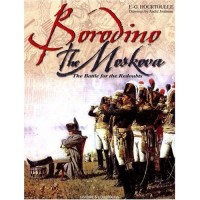
Title: Borodino The Moskova - The Battle for the Redoubts
Author: F.G. Hourtoulle
Published: 2003
Readers of F.-G. Hourtouille's acclaimed Jena-Auerstaedt will find the same extraordinary detail in this study of Napoleon's 1812 campaign. Over 300 uniforms and over 120 flags are featured in the color plates as well as paintings of the battle. The evolution of the battle is described with the aid of numerous new color maps.
